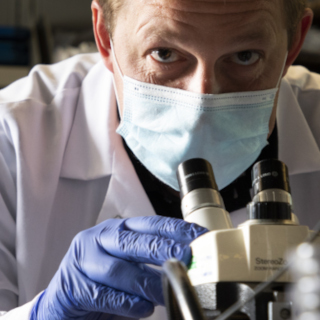IACUC Resources and 3Rs
Resources and the Three R’s – Replacement, Reduction, Refinement
In 1959, William Russell and Rex Burch urged all animal researchers to follow a policy of minimizing animal pain and use.
They described three important concepts now known as the “Three R’s - Replacement, Reduction, and Refinement.”
The purpose of these concepts is to minimize animal use and pain or distress while still achieving the critical scientific objectives that lead to advances in health and medicine.
Replacement is simply replacing the use of animals with non-animal techniques. Practical examples of
“replacement” include:
- use of cell culture techniques to replace animals as incubators for cell lines,
- use of immunologic bench assays to replace bioassays involving animals,
- use of computer software to model the pharmacokinetics of drugs in place of animal studies.
Reduction refers to strategies that reduce the number of animals used. Strategies would include a statistical analysis to determine the correct sample size for valid results.
- limiting group size to the minimum needed to obtain statistically significant data,
- performing multiple experiments simultaneously so the same control group can be used for all
experiments, - sharing tissues with other investigators,
- designing experiments so animals serve as their own controls,
- using newer instrumentation that improves precision and reduces animals needed per data point.
Refinement refers to changing experiments or procedures to reduce pain or distress in those animals that must be used. Places where refinement can be applied in research include but is not limited to handling, husbandry, anesthesia, surgery, and analgesia.
- refined handling and husbandry techniques.
- improvement of surgical techniques that result in fewer model failure,
- modification of research procedures to be less invasive, painful, or stressful to subjects,
- new anesthetics and analgesics that provide reduced stress and faster recovery,
- modification of animals’ habitat for environmental enrichment, normal behavior.
Resources for implementing 3Rs in research:
Literature Searching: How to Find Animal Use Alternatives
The USDA Animal Welfare Act Regulations require the Institutional Animal Care and Use Committee (IACUC) to:
- Ensure that the principal investigator has considered alternatives if painful or distressing procedures are proposed.
- Evaluate a written narrative provided by the principal investigator that describe which source or sources were used to determine that alternatives were not available.The bottom line is that the IACUC must assure that you have completed the following steps, and if alternatives are
found and NOT USED, you must provide an acceptable scientific justification for not doing so.- The databases searched (Index, Medicus, Medline, Current Contents, etc.) or other sources used such as colleagues at
scientific meetings, journal articles read, and presentations attended. - The date that any database searches were performed.
- The years of citations covered by database searches.
- The key words and/or search strategy used when searching a database.
- A search for reduction and refinement, not just replacement of animals.
- The databases searched (Index, Medicus, Medline, Current Contents, etc.) or other sources used such as colleagues at
USDA National Agricultural Library, Animal Use Alternatives (3Rs)
For additional information, please contact the Institutional Animal Care and Use Committee office at
IACUC@mso.umt.edu or (406) 243-6395.
